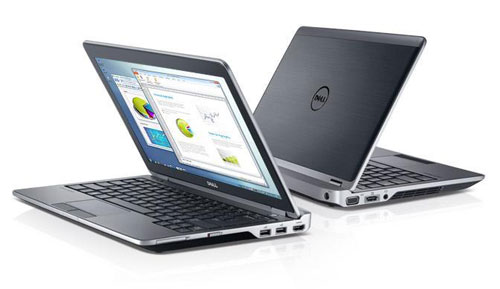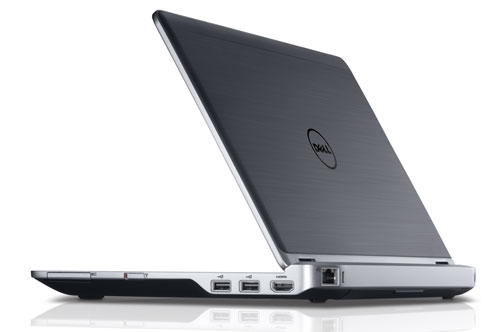
The new Dell E-Series is designed for those on the road who are looking for an ultraportable laptop that doesn’t compromise on raw computing power and doesn’t need a power outlet after an hour of use. TechCentral’s Craig Wilson put the E6220 through its paces and was impressed with the results.
Dell is a favourite in the enterprise market, in part because of its outstanding after-sales service in the US, and because its systems are highly customisable, meaning one can buy two devices from the same range but opt for different hardware depending on the sort of user for whom the device is intended.
The E6220 is an elegant and compact package. The brushed metal top feels reassuringly hardy and Dell has seen fit to include a docking port on the bottom of the device should users with to take it off the road and into an office or home.
Its tapered corners and indented sides make it look sleeker than it really is. It’s 2,5cm at its thickest, but because it only weighs less than 1,5kg, the E6220 feels lightweight considering its not inconsiderable innards.
Dell has made some great design decisions with the E-Series. The optionally backlit keyboard is minimalist, but consistently sized and responsive keys make it delight to use. The ability to alter screen brightness via the function key and the up or down arrow — or keyboard brightness with left and right — and the separate volume keys above the keyboard mean frequently used features are easily accessible.
Ethernet and power connect to the rear, while the left-hand side includes a VGA port, a combined eSata/USB port and an audio in/out. On the right there’s an HDMI port, two more USB 2.0 ports, a toggle switch for turning wireless connectivity on or off, and an expansion card slot with a plastic tray placeholder that’s thoughtfully marked with centimetres and inches on one side and an imperial-to-metric conversion chart on the other.

As with most Dell computers, the E6220 is available in a wide variety of configurations and users can boost RAM up to 8GB and choose between mechanical or solid-state drives of varying sizes.
The model we reviewed came with a Core i5-2520M processor running at 2,5GHz, 6GB of RAM, a 250GB Samsung solid-state and the 64-bit version Windows 7 Professional.
The result is a quite respectable Windows Experience score of 5,8. Despite an onboard Intel graphics card, it was the graphics that ranked lowest and influenced the final score. Processor, RAM and hard drive assessments all returned figures over 7,0.
In short, the E6220 is designed to be a workhorse for the digital nomad and on both those scores Dell delivers.
The trackpad is smaller than we’d like, and the buttons have a little too much give, but it’s suitably sensitive, supports multi-touch gestures such as two-finger scrolling and pinch to zoom, meaning users shouldn’t have to reach for a mouse.
The screen is a 12,5-inch LED with a resolution of 1366×768. Viewing angles are excellent and colours and contrast are vibrant. Dell has included a seal of sorts around the edge of the E6220s display that should help to keep dust from sneaking in when it’s not in use.
With Wi-Fi enabled, the screen at full brightness, and video playing at full-screen with the volume at 50%, the E6220’s battery lasted a few minutes more than three hours. That’s neither best in class nor worst, and if battery life is a concern Dell offers a six-cell battery instead of the three-cell version our review unit included. We imagine in regular use we could expect at least five hours.
E-Series models with lower specifications start at around R10 000, so we would expect one in the configuration we had to cost closer to R15 000, particularly with a solid-state drive. That’s in keeping with devices in its class, and although it’s slightly more expensive than Apple’s MacBook Air, it’s substantially cheaper than the likes of Samsung’s Series-9 equivalents.
On the whole, the E6220 hits its marks admirably: it’s suitably potent while still being portable, battery life is respectable for its class as is its price point, and some sensible design decisions make it as easy to use as it is good to look at. — Craig Wilson, TechCentral
- Subscribe to our free daily newsletter
- Follow us on Twitter or on Facebook
- Visit our sister website, SportsCentral (still in beta)




